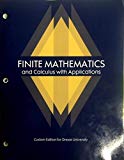
Concept explainers
Samuel Alito When Supreme Court Justice Samuel Alito was on the U.S. Court of Appeals for the 3rd Circuit, he dissented in the successful appeal of a first-degree murder case. The prosecution used its peremptory challenges to eliminate all African Americans from the jury, as it had in three other first-degree murder trials in the same country that year. According to a majority of the judges, “An amateur with a pocket calculator can calculate the number of blacks that would have served had the State used its strikes in a racially proportionate manner. In the four capital cases there was a total of 82 potential jurors on the venires who were not removed for cause, of whom eight, or 9 .76%, were black. lf the prosecution bad used its peremptory challenges in a manner proportional to the percentage of blacks in the overall venire, then only 3 of the 34 jurors peremptorily struck (8.82%) would have been black and 5 of the 48 actual jurors (10.42%) would have been black. Instead, none of the 48 jurors were black. Admittedly, there was no statistical analysis of these figures presented by either side in the post-conviction proceeding. But is it really necessary to have a sophisticated analysis by a statistician to conclude that there is little chance of randomly selecting four consecutive all white juries?” Source: findlaw.com.
- (a) Using binomial probability, calculate the probability that no African Americans would be selected out of 48 jurors if the percentage of African Americans is 9.76%.
- (b) Binomial probability is not entirely accurate in this case, because the jurors were selected without replacement, so the selections were not independent. Recalculate the probability in part (a) using combinations.
- (c) In his dissent, Judge Alito wrote, “Statistics can be very revealing—and also terribly misleading in the hands of ‘an amateur with a pocket calculator.’ . . . Although only about I 0% of the population is left-handed, left-handers have won five of the last six presidential elections. Our ‘amateur with a calculator’ would conclude that 'there is little chance of randomly selecting’ left-handers in five out of six presidential elections. But does it follow that the voters cast their ballots based on whether a candidate was right- or left-handed?” Given the figures quoted by Judge Alito, what is the probability that at least 5 out of the last 6 presidents elected would be left-handed?
- (d) The majority of the judges, in disagreeing with Judge Ali to, said, “The dissent has overlooked the obvious fact that there is no provision in the Constitution that protects persons from discrimination based on whether they are right-handed or left handed." Furthermore, according to Chance News, only 2 of the last 6 men elected president were left-handed. What is the probability that at least 2 out of the last 6 presidents elected would be left-handed? Source: Chance News.
Want to see the full answer?
Check out a sample textbook solution
Chapter 8 Solutions
Finite Mathematics and Calculus with Applications
- Decide whether each limit exists. If a limit exists, estimate its value. 11. (a) lim f(x) x-3 f(x) ↑ 4 3- 2+ (b) lim f(x) x―0 -2 0 X 1234arrow_forwardDetermine whether the lines L₁ (t) = (-2,3, −1)t + (0,2,-3) and L2 p(s) = (2, −3, 1)s + (-10, 17, -8) intersect. If they do, find the point of intersection.arrow_forwardConvert the line given by the parametric equations y(t) Enter the symmetric equations in alphabetic order. (x(t) = -4+6t = 3-t (z(t) = 5-7t to symmetric equations.arrow_forward
- Find the point at which the line (t) = (4, -5,-4)+t(-2, -1,5) intersects the xy plane.arrow_forwardFind the distance from the point (-9, -3, 0) to the line ä(t) = (−4, 1, −1)t + (0, 1, −3) .arrow_forward1 Find a vector parallel to the line defined by the parametric equations (x(t) = -2t y(t) == 1- 9t z(t) = -1-t Additionally, find a point on the line.arrow_forward
- Find the (perpendicular) distance from the line given by the parametric equations (x(t) = 5+9t y(t) = 7t = 2-9t z(t) to the point (-1, 1, −3).arrow_forwardLet ä(t) = (3,-2,-5)t + (7,−1, 2) and (u) = (5,0, 3)u + (−3,−9,3). Find the acute angle (in degrees) between the lines:arrow_forwardA tank initially contains 50 gal of pure water. Brine containing 3 lb of salt per gallon enters the tank at 2 gal/min, and the (perfectly mixed) solution leaves the tank at 3 gal/min. Thus, the tank is empty after exactly 50 min. (a) Find the amount of salt in the tank after t minutes. (b) What is the maximum amount of salt ever in the tank?arrow_forward
 Calculus: Early TranscendentalsCalculusISBN:9781285741550Author:James StewartPublisher:Cengage Learning
Calculus: Early TranscendentalsCalculusISBN:9781285741550Author:James StewartPublisher:Cengage Learning Thomas' Calculus (14th Edition)CalculusISBN:9780134438986Author:Joel R. Hass, Christopher E. Heil, Maurice D. WeirPublisher:PEARSON
Thomas' Calculus (14th Edition)CalculusISBN:9780134438986Author:Joel R. Hass, Christopher E. Heil, Maurice D. WeirPublisher:PEARSON Calculus: Early Transcendentals (3rd Edition)CalculusISBN:9780134763644Author:William L. Briggs, Lyle Cochran, Bernard Gillett, Eric SchulzPublisher:PEARSON
Calculus: Early Transcendentals (3rd Edition)CalculusISBN:9780134763644Author:William L. Briggs, Lyle Cochran, Bernard Gillett, Eric SchulzPublisher:PEARSON Calculus: Early TranscendentalsCalculusISBN:9781319050740Author:Jon Rogawski, Colin Adams, Robert FranzosaPublisher:W. H. Freeman
Calculus: Early TranscendentalsCalculusISBN:9781319050740Author:Jon Rogawski, Colin Adams, Robert FranzosaPublisher:W. H. Freeman
 Calculus: Early Transcendental FunctionsCalculusISBN:9781337552516Author:Ron Larson, Bruce H. EdwardsPublisher:Cengage Learning
Calculus: Early Transcendental FunctionsCalculusISBN:9781337552516Author:Ron Larson, Bruce H. EdwardsPublisher:Cengage Learning





